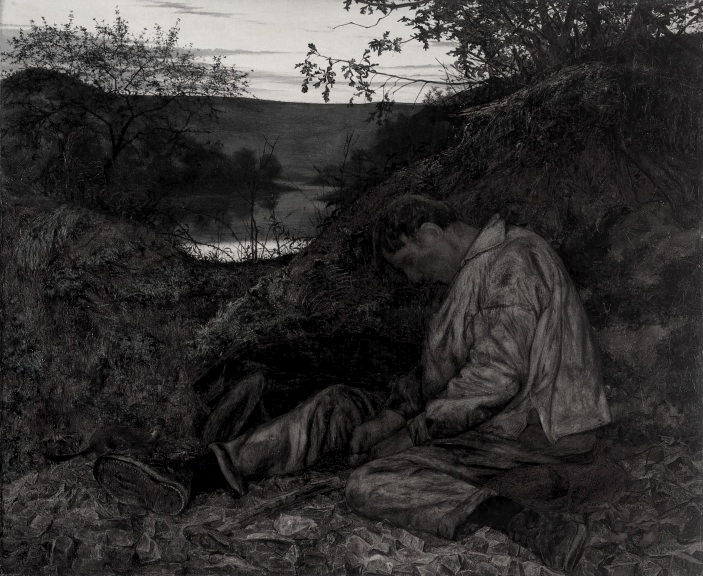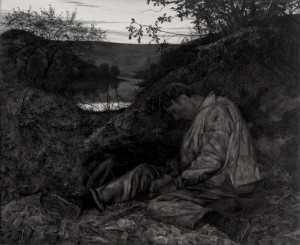Description
Meet Henry Wallis’ tragic Stonebreaker (1857) in Birmingham City Art Gallery. The painting was inspired by the chapter in Thomas Carlyle’s satirical novel Sartor Resartus entitled ‘Helotage’, the word denoting the ancient Spartan system of state slavery. The exhibition catalogue when the picture was first put on display at the Royal Academy in London quoted the passage of Carlyle which laments the intellectual starvation of the worker who lives and dies without acquiring knowledge of anything but physical deprivation and toil. Wallis’ manual labourer looks as though he is asleep, but he has actually been forced by poverty to work until he dies. Wallis is thought to have painted The Stonebreaker as a commentary on the Poor Law Amendment Act of 1834.
In the novel, Carlyle ironically proposes a revival of the ancient Spartan custom of murdering helots arbitrarily to keep them intimidated and obedient: ‘now after the invention of fire-arms, and standing armies, how much easier were such a hunt! Perhaps in the most thickly peopled country, some three days annually might suffice to shoot all the able-bodied Paupers that had accumulated within the year. Let Governments think of this. The expense were trifling: nay the very carcasses would pay it. Have them salted and barrelled; could not you victual therewith, if not Army and Navy, yet richly such infirm Paupers, in workhouses and elsewhere, as enlightened Charity, dreading no evil of them, might see good to keep alive?’





